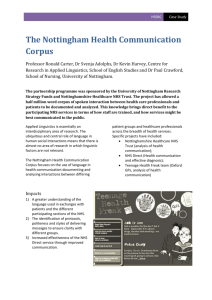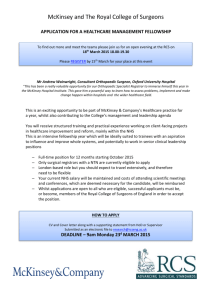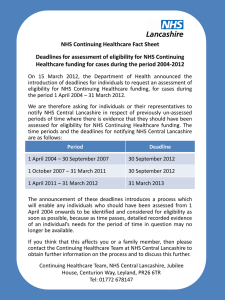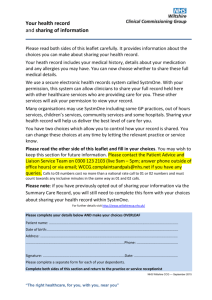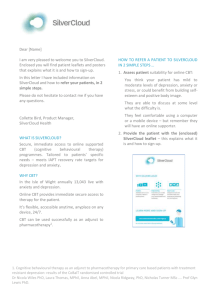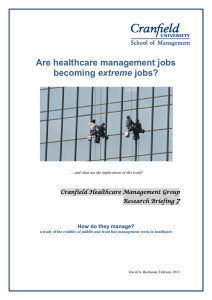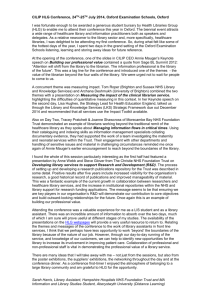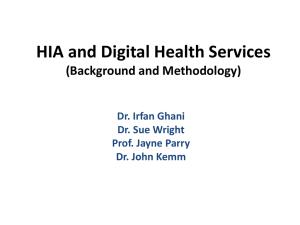Healthcare Leadership Model
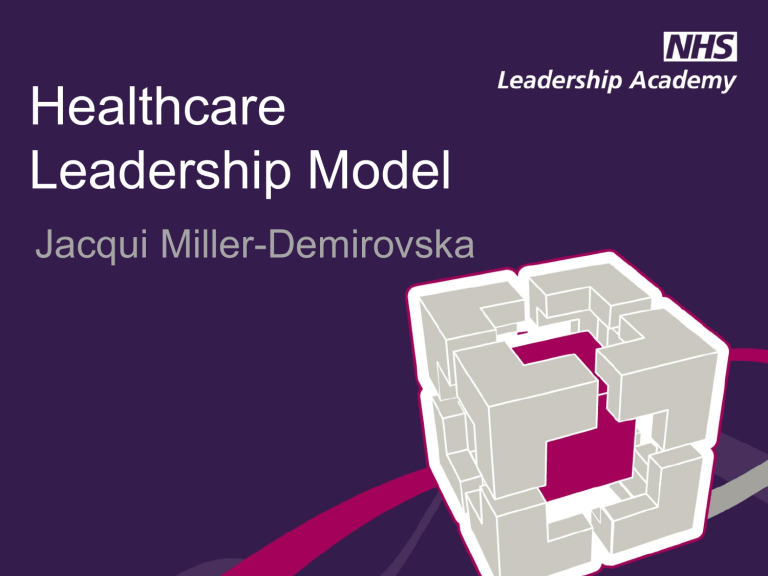
Healthcare
Leadership Model
Jacqui Miller-Demirovska
Revisiting the LF
In February 2013 it was decided to revisit the LF, for a number of reasons:
– Desire to ensure research was as up-to-date as possible
– Increasing demands on the NHS
– Shift in focus on where care is delivered
– Recognise that leaders at all levels are needing to think and act differently
Research
• Literature review: Towards a new model of leadership for the NHS
(2013), John Storey and Richard Holti, Open University
• Comparison with further data sets:
– Health system competency models in the Hay Group competency database
– Thematic analysis of NHS leaders’ assessment data (including CCG assessment data from over 550 clinical and non-clinical candidates)
• Interviews with cross section of staff:
– Behavioural Event Interviews
– Strategic Interviews
• Coding data and creating ‘straw man’ draft
• Testing: Focus groups with cross section of staff
• Finishing (including plain English review) and final version published
(November 2013)
Transition from Leadership Framework to
Healthcare Leadership Model
• Leadership Framework
• Demonstrating Personal qualities
• Working with others
• Managing Services
• Setting Direction
• Creating the Vision
• Delivering the Strategy
• Healthcare Leadership
Model
• Inspiring shared purpose
• Leading with care
• Evaluating information
• Connecting our service
• Sharing the vision
• Engaging the team
• Holding to account
• Developing capability
• Influencing for results
Healthcare Leadership Model
The Healthcare Leadership Model is made up of nine behavioural dimensions:
• Inspiring shared purpose
• Leading with care
• Evaluating information
• Connecting our service
• Sharing the vision
• Engaging the team
• Holding to account
• Developing capability
• Influencing for results
Structure
• Each dimension includes:
– Brief description of what the dimension is about and why it is important, and section that says ‘what it is not’ to provide further clarity
• Example behaviours are shown on a four part scale: essential, proficient, strong, exemplary
• Complexity and sophistication of behaviours increase, but are not tied to particular job roles or levels
– So: people in junior roles may find themselves to be within ‘strong’ or
‘exemplary’ parts of the scale, and senior staff may find themselves in
‘essential’ or ‘proficient’
• All nine dimensions are important to an individual’s leadership role, however which dimensions are most important for you to use and develop will depend on the type of job you have, the needs of the people you work with, and the context of your role within your organisation.
Supporting tools and resources
• On-going work: building additional resources such as case studies and personal stories, templates, guidance for specific audiences (i.e. education providers), etc.
– Exploring how the model can be used at individual, team and organisation levels
• Currently developing supporting self-assessment tool and 360 degree feedback tool – launching April
2014
– Includes support for existing LF 360 degree tool feedback facilitators to update their training to the new tool for free
Next steps………..
Regional and local level
• No.’s of accredited facilitators across our LETCs/WM
Region?
• No.’s of facilitators that will need enhanced training ?
• No’s of pre-purchase 360 feedback tool places
£40 per person (50 places additional 10 free)
£35 group reports
Leadership Development suggestions
• Leadership/OD Strategy
• Board Development
• Links to clinical & Medical Leadership Competency
Framework
• Using the Healthcare Leadership Model within talent conversations
• Personal Development
• Links to NHS Academy Core Programmes, Regional & local leadership development programmes
Questions? Comments?
Please contact us at:
Jacqueline.miller-demirovska@wm.hee.nhs.uk
leadershipmodel@leadershipacademy.nhs.uk
Visit website: www.leadershipacademy.nhs.uk/leadershipmodel
